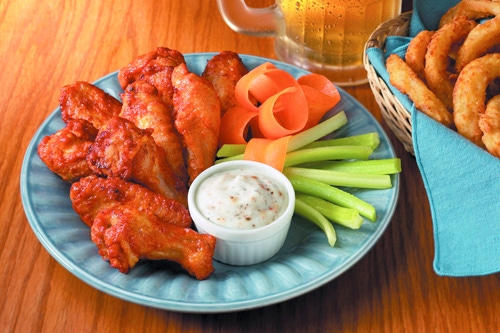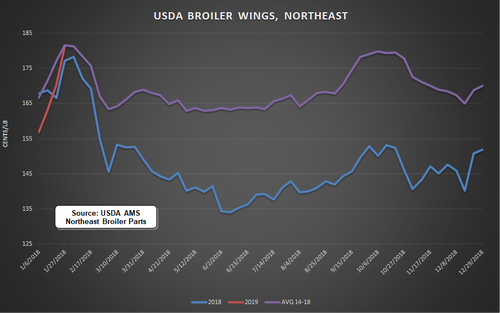Chicken wing rally stronger than expected ahead of Super Bowl
Americans expected to consume 3.8 billion wings, up 2% from 2018.

The Super Bowl spike related to chicken wing consumption in the U.S. is an annual trend that stresses poultry production and inflates prices, according to Texas A&M AgriLife Extension Service experts. This year, a price rally has been larger than anticipated due to tighter supplies of fresh product.
The National Chicken Council recently reported that Americans will consume 1.38 billion chicken wings during Super Bowl LIII weekend, when the Los Angeles Rams and New England Patriots battle for the Lombardi Trophy. This is a 2% increase — 27 million wings — versus last year.
Dr. David Anderson, AgriLife Extension economist at College Station, Texas, said poultry production and price spikes leading up to the Super Bowl are a reflection of the incredible number of chicken wings consumed.
When it comes to Super Bowl Sunday, Anderson said most consumers focus their purchases on snack foods like chips and dip, hot wings and grilling meats.
As chicken wings continue to rise in popularity and demand, consumers should expect to see increased chicken wing and leg drumstick prices leading up to the Super Bowl, Anderson said, but they could also see some specials on other game-day fare.
“With depressed prices on some meat and cheese, chicken wings look like the only product out there that will have that Super Bowl effect this year,” Anderson said. “The Super Bowl is the biggest sales generator for some individual businesses, but consumers won’t see an effect on prices like they will with chicken wings.”
According to the U.S. Department of Agriculture, the price of chicken wings rises dramatically leading up to the Super Bowl and falls after the big game. From 2013 to 2017, chicken wing prices increased 16 cents/lb. from the beginning of January through Super Bowl Sunday.
Last year, prices of wings increased to $1.78/lb. by Super Bowl Sunday from $1.68/lb. on Jan. 1. The USDA average price for wings just last week was $1.81/lb., and they were at $1.57/lb. during the first week of January. Informa Economics IEG anticipates that the price will average $1.83/lb. this week.

Dr. Craig Coufal, AgriLife Extension poultry specialist at College Station, said increased demand for chicken wings causes an annual problem when the specialty poultry product drives production beyond normal supplies. Boneless wings and chicken strips help, but chicken production and supplies are stressed each January.
“Wings are one of those chicken products that throws the production side off,” he said. “We joke that the only way to keep up with the demand would be to create a four-winged, four-legged chicken, but that just shows how much the lead-up to the Super Bowl and Super Bowl Sunday affects the chicken market.”
Brian Earnest, commodity market analyst for IEG, told Feedstuffs that availability fresh wings has become limited in recent weeks as preparations are being made for peak seasonal demand. However, he said tighter availability has been exacerbated by faltering production during the six-week period ended Dec. 29, 2018.
“The result has been a stronger rally than was expected nearby,” he said. "Some buyers who were planning for much more modest strengthening due to record freezer inventories during the late-fall period, an outlook for continued expansion and elevated boneless wing promotions have been caught off guard.”
Earnest noted that the young chicken harvest reported by USDA during the six-week period ended Jan. 12 was down 1.5% from the prior year, which has supported a bullish market sentiment. However, by the week ended Feb. 9, IEG Vantage projects that weekly harvest totals over the prior six-week period will be up exactly 2% compared with the same week a year earlier. This should provide easing for fresh market valuation, Earnest added.
About the Author(s)
You May Also Like



.png?width=300&auto=webp&quality=80&disable=upscale)

